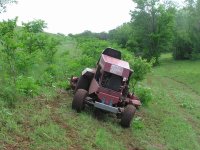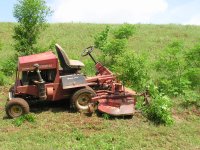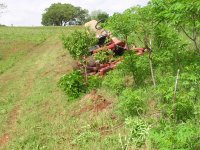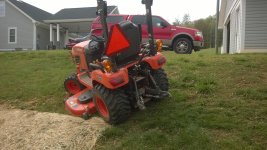I'll take issue with this and relate a story that I've written up here several other times.
I had my BX in full loader/weighted/dig mode. FEL on, 275 lb bar on the 3ph, 50 lbs of wheel weights on each rear tire. My rear tires are filled. I drove to my sidehill where I've felt uncomfortable at times. My FEL was about 3 inches off the ground, the weight bar was about axle height. I dismounted, stepped to the rear and pushed on the ROPS from the uphill side. I lifted the rear wheel off the ground with one hand. I then went back to the garage and stripped it down to mowing mode (sans MMM, which would improve the situation even more). I took off the weight bar, wheel weights and FEL, drove back to the exact same spot and conducted the same experiment. I was unable to push the ROPS enough to lift the back wheel at all, certainly not with one hand.
The FEL can be a great emergency brake on a hill. It *might* save you from rolling *if* you got it down quick enough to take the weight off the front axle. But it will also put you a *LONG* ways toward rolling in the first place.
Agree with this 100%. A 15 degree slope will not bother a BX. My hill measures about 23 degrees.



